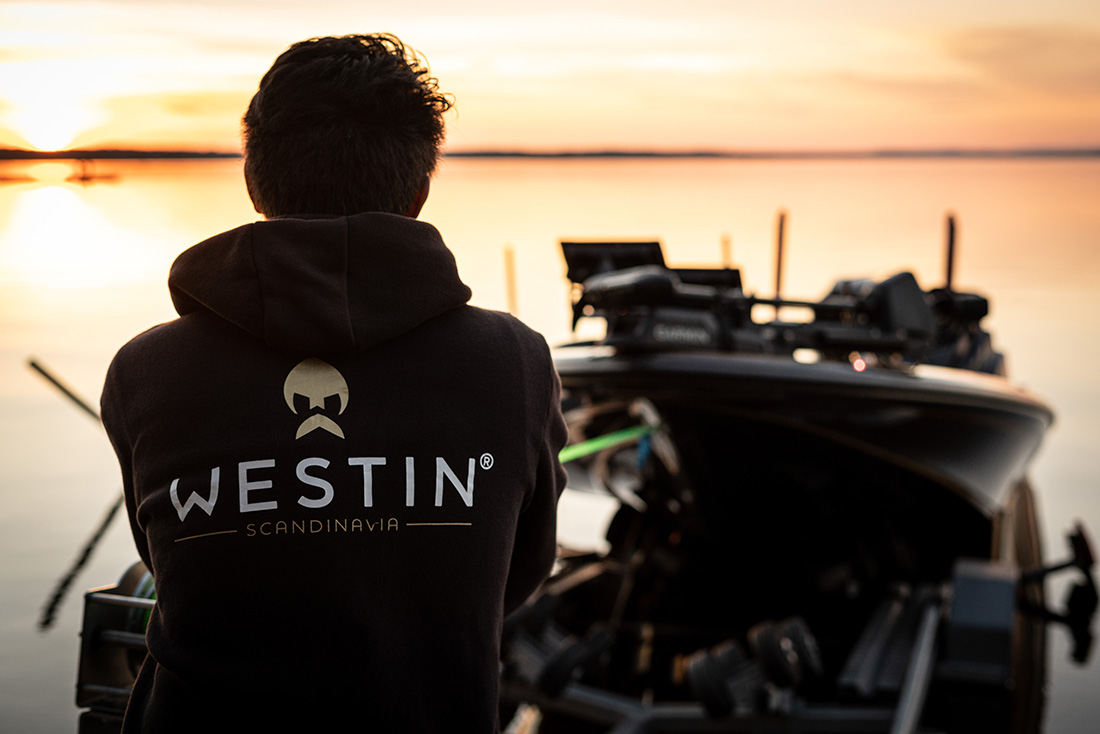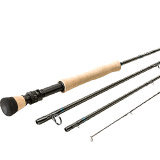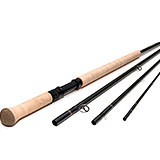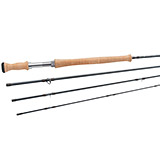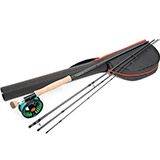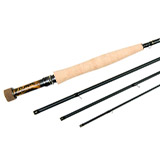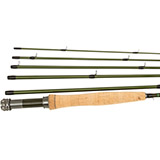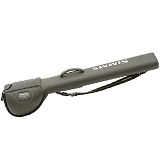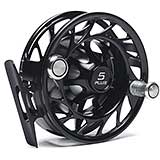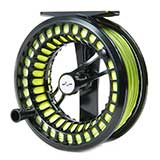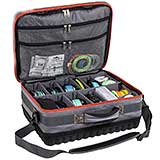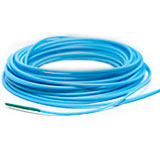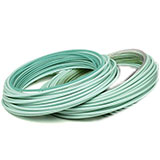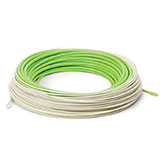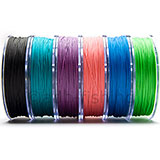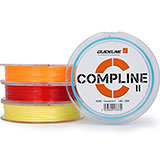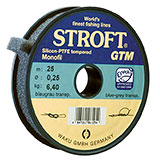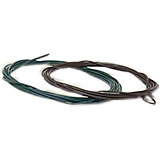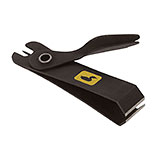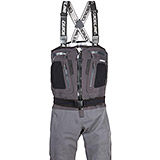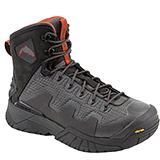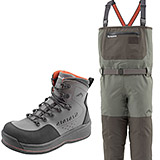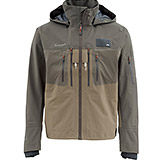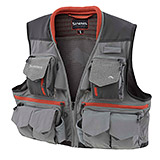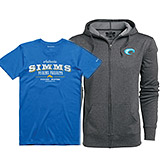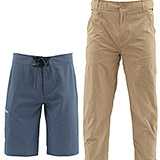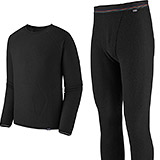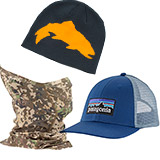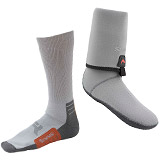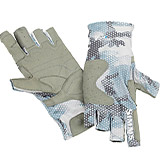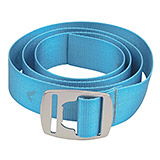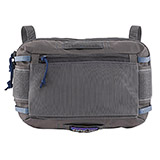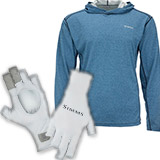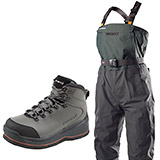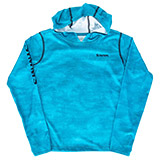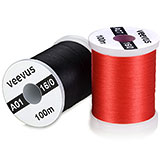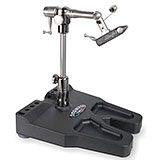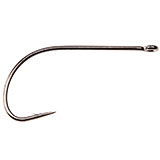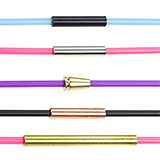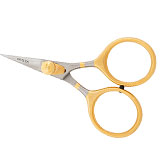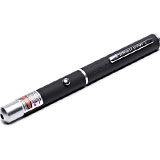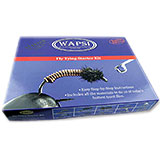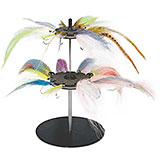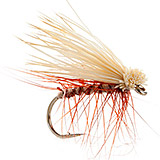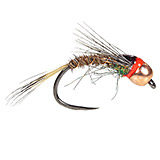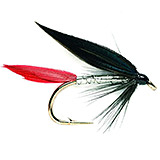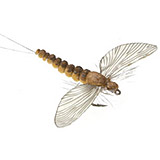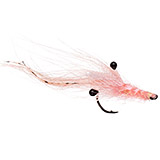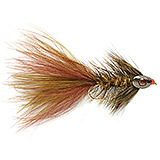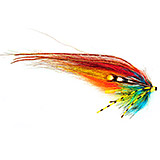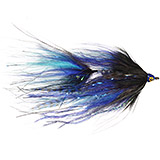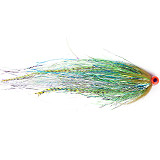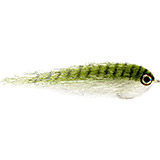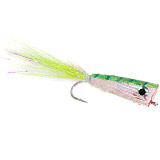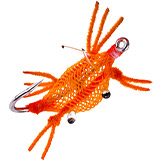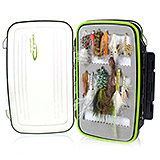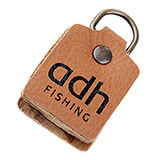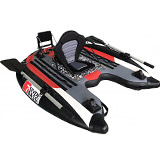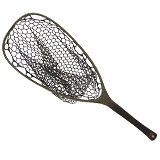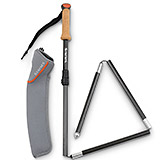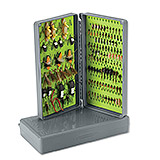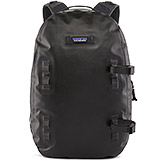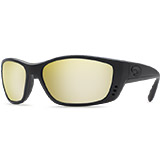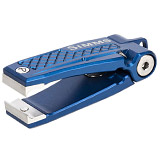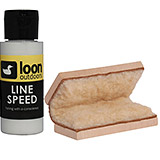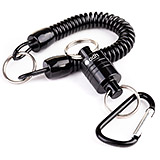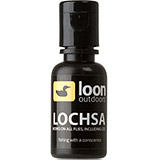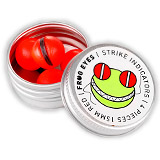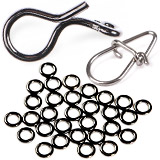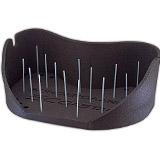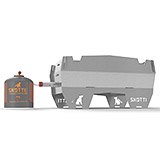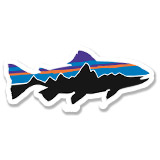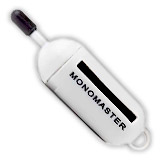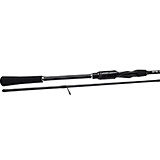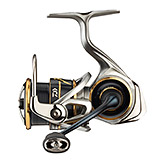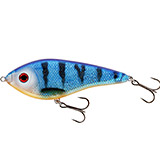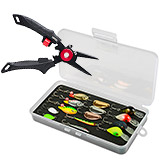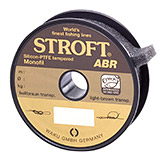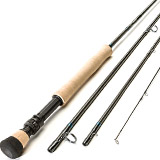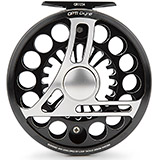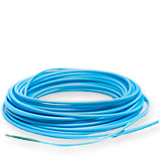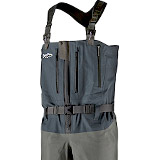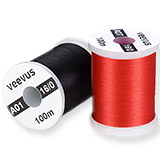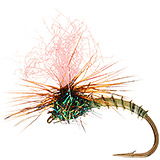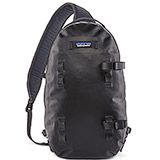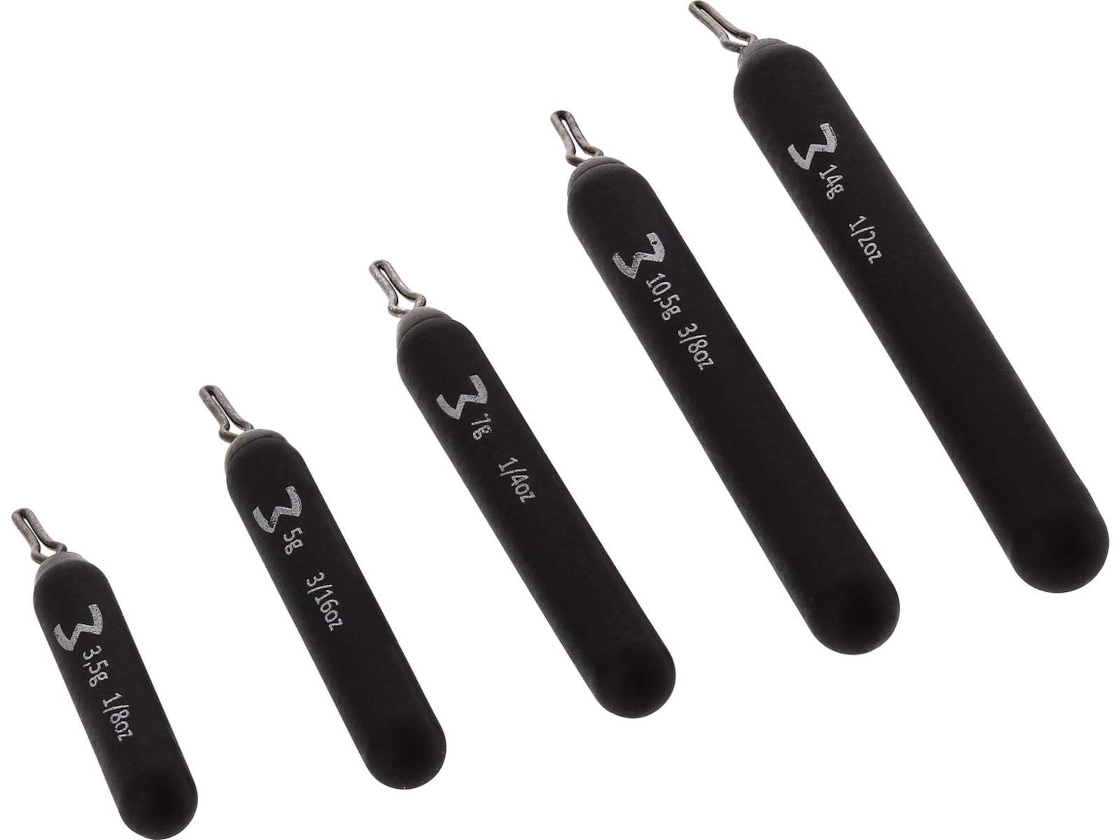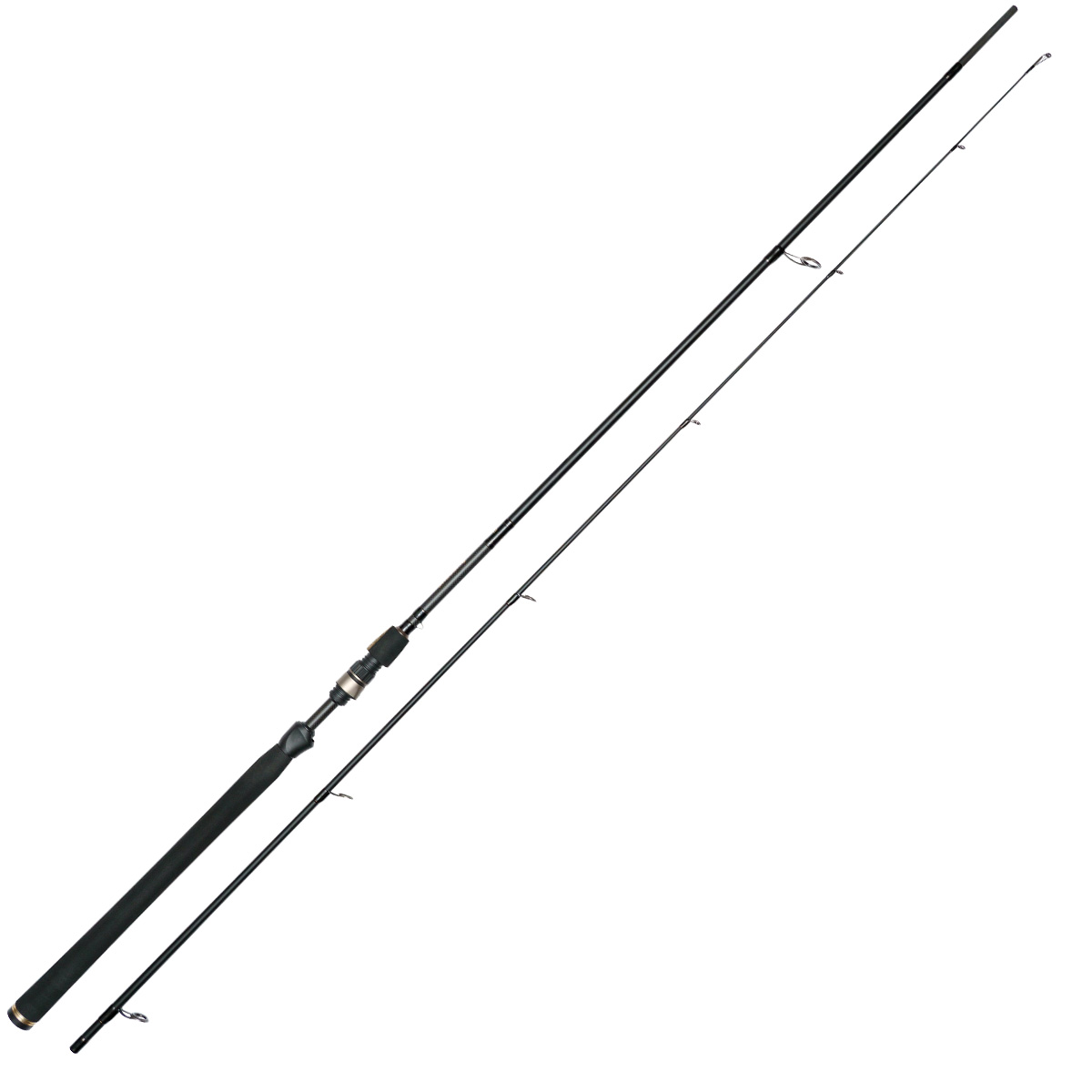Talking with Dietmar Isaiasch - Hot Tipps for Predators from the Westin Pro

Hardly any German predator expert has contributed to so many innovative developments in the spin fishing sector as Dietmar Isaiasch. From vertical fishing for zander, to publicizing exciting US-techniques, to developing red-hot new lures and rods. Reason enough to meet Didi for a nice chat, in which he revealed his hottest top-10 summer tips, in addition to many other, exciting topics.
adh-fishing: Hello Dietmar! You have been professionally active in the fishing scene for well over 30 years. There is hardly a platform on which you have not been represented in recent years: from articles in most fishing magazines, to DVDs, TV appearances, stage shows, international competitions, to the development of well-known rods and lures. You've even written your own books! Everyone who is more or less in touch with predator fishing probably knows your face and that's why we are of course especially pleased to invite you here today for an interview.
Dietmar Isaiasch: Yes, thank you very much for the invitation. It's funny when you look back on all the things you've done and designed without getting tired and still have great, innovative ideas in store. In any case, you can still stay tuned for what’s coming next.
adh-fishing: I can still remember when I was a young angler about 20 years ago and was very interested in everything to do with fishing. Your face was already to be seen at that time on several fishing magazines and DVDs. I especially remember the topic of vertical fishing. You helped develop this technique back then, how did it come about?
Dietmar Isaiasch: It was a very long time ago when a group of crazy zander anglers from Amsterdam specialized in fishing with rubber lures. At that time, fishing for zander in Holland was almost exclusively done with baitfish. Sometimes with very special, delicate tackle and hardly anyone fished for zander with artificial lures. A small group around Rob Blom, Bertus Rozemeijer, a few others and myself were jigging at that time first with smaller, self-cast pilkers and later with softlures from the boat over the bottom. How successful softbaits could be on zander had already been confirmed for me several times on my home water, the Rhine-Herne canal. That was at the end of the 80's, at that time there were only very few rubber lures on the market - expensive and hard to get - and the fishery was virtually undeveloped. Both the lures, their guidance, and (for today) self-evident things like stingers on softbaits, dead rod, etc. we found out for ourselves and made public. However, a real boom occurred when my wife Carmen (as my team partner) won the very first official predator fishing world championship in France together with me in 2002, of course with exactly this technique! After that, vertical fishing was suddenly on everyone's lips!
 Carmen with a proper pike, caught while vertical fishing.
Carmen with a proper pike, caught while vertical fishing.
adh-fishing: Has vertical fishing changed a lot since then and would you say that this technique is still as effective today as it was back then?
Dietmar Isaiasch: Certainly, vertical fishing is still very effective today, especially in combination with the latest live technology! This has opened up a wide horizon for us anglers. Of course, the fishing tackle itself has also improved greatly. Fast rods, fine braided high-tech lines and lots of cool lures provide more range and more sensitivity when fishing. Classic vertical fishing lost a bit of popularity in the meantime, as it was assumed that this technique was only possible at great depths. However, this misconception has been dispelled, especially thanks to modern live technology, which makes it easier to catch fish in midwater and shallower zones. As a result, (modern) vertical fishing has recently become much more popular again.
adh-fishing: People associate you especially with zander and also perch fishing. What fascinates you so much about these two fish species?
Dietmar Isaiasch: Well, actually it's the zander that has fascinated me from the very beginning. Perch and pike were - at least in the past - always by-catch, even though the sizes were quite respectable. For me, there was always a kind of myth surrounding the zander. A curious, but very “bitchy”, less predictable fish, similar to a cat. Hunting very large zander was especially exciting for me, as the air gets very thin up there and catching really big fish was and is extremely difficult. The versatility of fishing also appealed to me enormously: whether with soft lures, cranks, trolling, with bait or a combination of different techniques - zander fishing has always been extremely multifaceted for me. Only within the last 20 years I have concentrated more and more on pike & perch, as I am also casting much more!
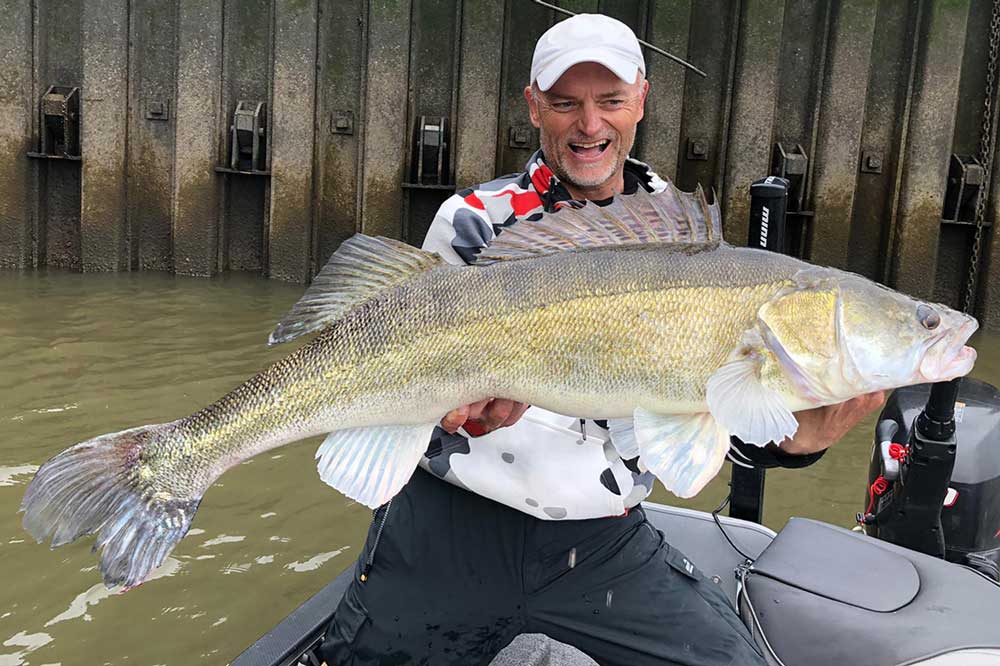 The elusive zander - Didi's favorite fish to target!
The elusive zander - Didi's favorite fish to target!
adh-fishing: Tips for beginners! What should beginners look for when choosing a rod for these two target fish?
Dietmar Isaiasch: Most people choose their rod depending on the target fish. However, this approach is not so target-oriented in my eyes. When I give tips on the right rod choice, it is always related to the lure and fishing technique and not necessarily to the type of fish. For jigging, the rod should always be tight and have a fast tip action to launch the jig quickly from the bottom. When fishing with plugs and crankbaits, the rod action may be more progressive. When choosing a rod, besides the action, the casting weight is of course crucial, and this depends exclusively on the lure. Depending on the target fish, you should rather ask yourself the question: Which lures and with which techniques do I want to fish with? A good test: just hang the lure on the rod tip, if the tip tilts a bit, the casting weight (or lure weight) fits the rod. And remember: the casting weight is the final (combined) weight - that is the jig head + soft bait!
adh-fishing: The lure forest is dense, but you are often seen fishing with soft plastic lures. Do you have a rule of thumb for size and color when choosing lures? Does that only apply to soft lures or to all artificial lures?
Dietmar Isaiasch: My lure-choice of depends primarily on the time of year and the food supply. A good approach if the water is unknown: Just have a look into the net of the coarse anglers, there you can get a good idea of the size of the bait fish. If I don't have any information about the water I usually start with a medium sized lure (about 12 cm for pike, about 8-10 cm for zander, 7-9 for perch). Later you can always adjust the size. I use this approach for all types of lures. But you're right, I especially like to use soft lures because I've already developed an incredible number of models and brands myself, but of course also because they are so incredibly versatile.
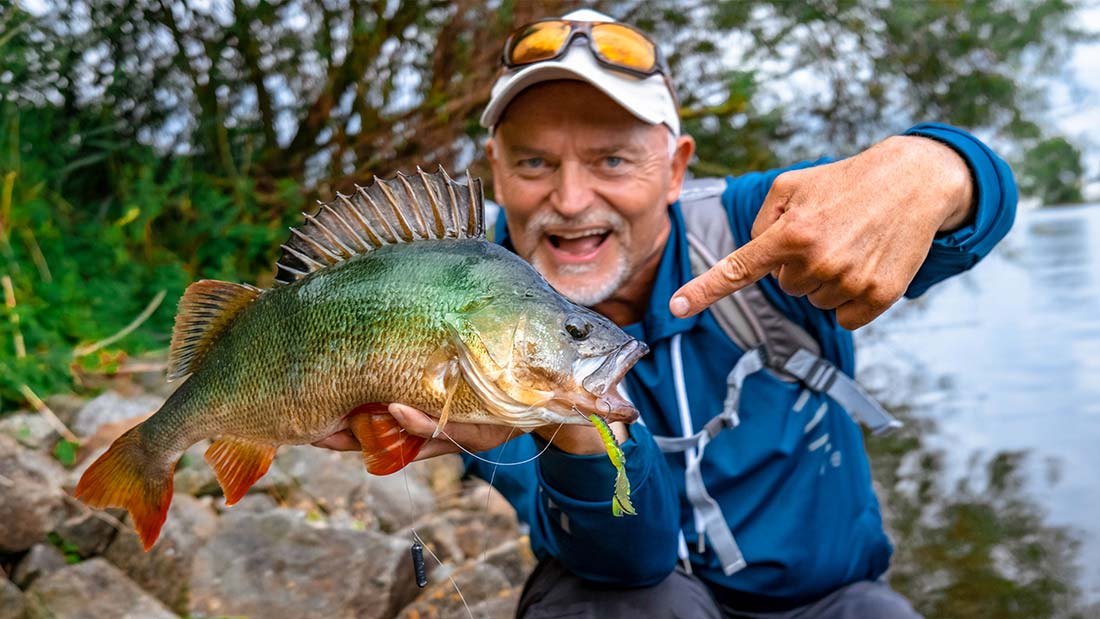 A chartreuse softlure was able to convince this chunky cherry in slightly colored water.
A chartreuse softlure was able to convince this chunky cherry in slightly colored water.
I then choose the lure color according to the water coloring: for murky water rather garish colors - for clear water rather subtle tones. I especially like a slight brown or green tint in the water and then I love chartreuse accents in the lure. Baits with stripes that break up the color also fish very well.
For water temperature, the following applies: in the cold seasons tend to fish a little larger, slower - in warmer temperatures tend to fish a little faster, smaller. As always, there are exceptions to these rules of thumb!
adh-fishing: If you were only allowed to fish one lure, what would it be and why?
Dietmar Isaiasch: Well of course a softlure, that is by far the most flexible artificial lure for me. And my favorite model, with which I can reliably catch zander, perch and pike, would be the ShadTeez from Westin! I especially like the older Shadteez with the slightly more bulbous body shape, which develops very nice flanking movements under water. If you like the bait a little slimmer, you can simply cut off a bit at the belly and tune the bait that way. So, for me, the ShadTeez in 9 cm and 12 cm is an absolute favorite lure that proves its merciless catchability everywhere in the world!
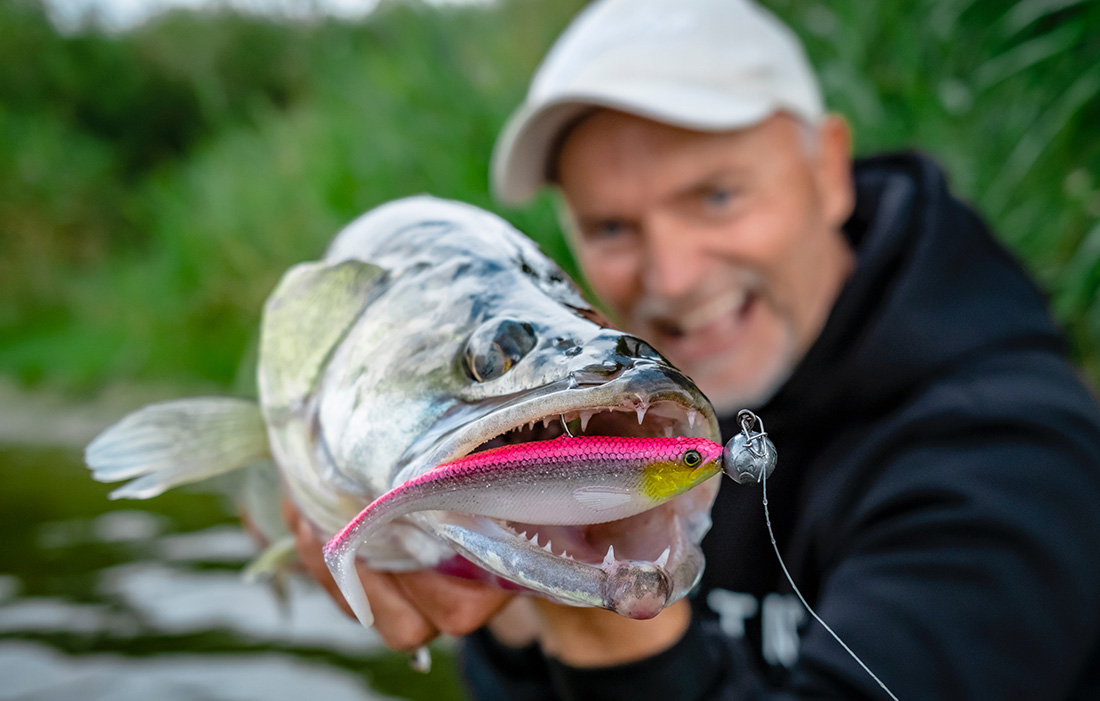 Didi' absolute favorite lure: The ShadTeez by Westin. This angry zander confirms!
Didi' absolute favorite lure: The ShadTeez by Westin. This angry zander confirms!
adh-fishing: What are your absolute favorite conditions for predator fishing, or do they exist at all? Do the different predatory fish differ greatly in their behavior towards the conditions?
Dietmar Isaiasch: Quite clearly: wind and slightly turbid water! Mirror flat conditions are always difficult, this applies to all predators. Wind force 3 on the water and a very light turbidity: light brown or light green (in summer) - that is absolutely ideal in my eyes. In winter I love light high water due to snow or rain. Then the catching success is almost guaranteed!
adh-fishing: Modern spin fishing sometimes involves a lot of electronics, which can quickly become very expensive. Do you need these "bells and whistles" at all to be successful? What tips do you have on 'spot selection' and 'finding fish' for those who don't own a boat or fish finder?
Dietmar Isaiasch: If you don't have an echo sounder and want to start from the shore, I recommend Google Maps! There you can recognize the promising spots on all types of waters with a high hit rate. It is important that you know what to look for! Basically, all predatory fish like to look for the places where monotony is broken by structure: Harbor entrances, inlets, shallow water zones, drop-off edges, edges of weed fields, etc. These structures can be excellently identified with today's satellite images, because from above you can already see the structure under water quite well in many bodies of water, especially in the shore areas.
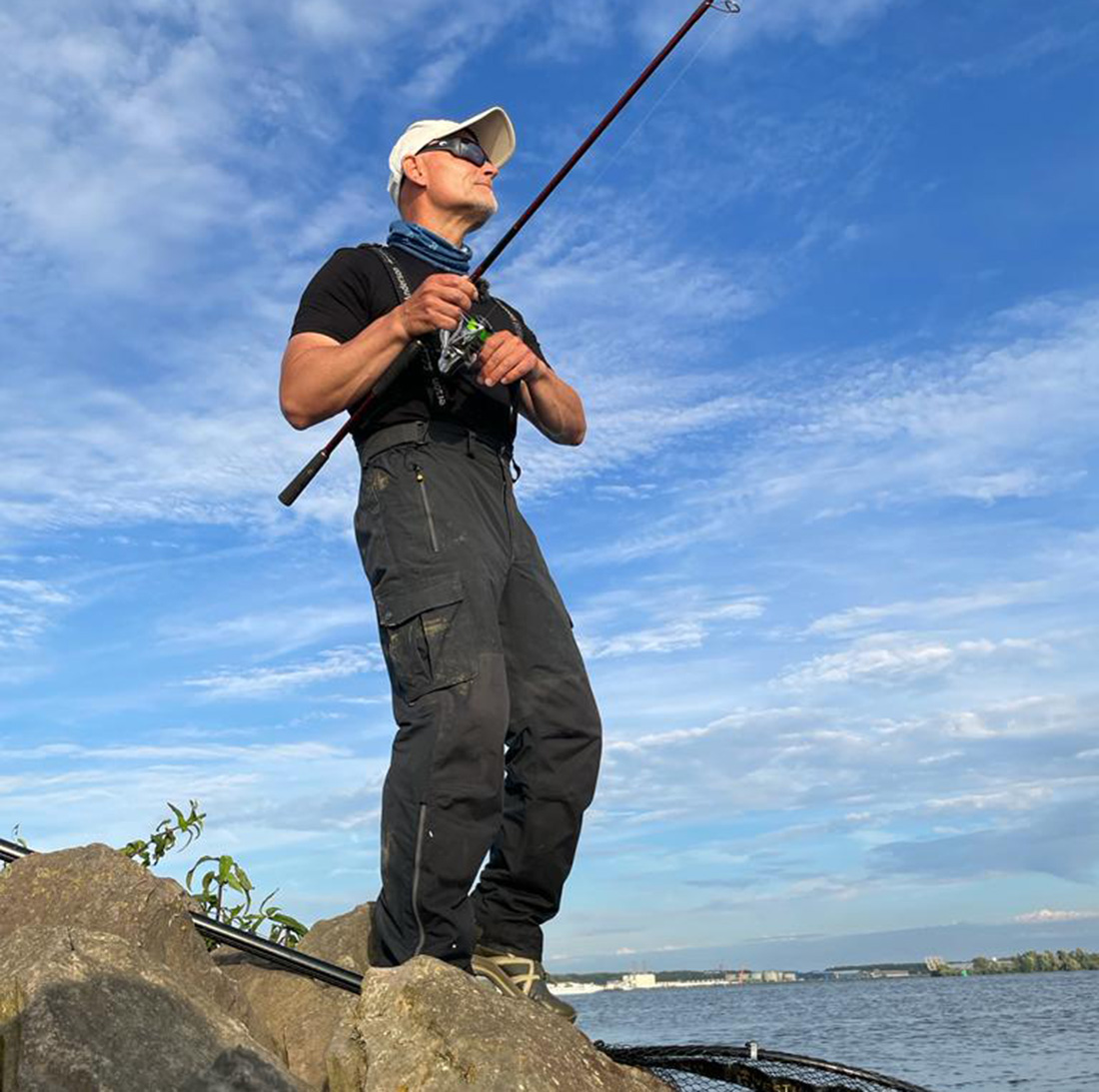 Casting from the bank with success: Near these rock structures hold baitfish, hence, the predators will be close, too.
Casting from the bank with success: Near these rock structures hold baitfish, hence, the predators will be close, too.
Another tip: watch out for water birds! Great crested grebes, cormorants, gulls, etc. reveal where the baitfish are. Then the predators are not far away.
Fishing with modern live technology is of course more precise and you can actively "pick out" fish. You won't catch every fish you see, of course, but especially when hunting very large fish, this technique can be very effective. BUT: The more time you spend looking at the fish finder, the less the bait is in the water. Therefore, without this technique in the right place, the catch rate is often higher!
adh-fishing: The predator fishing scene has developed rapidly in recent years, especially from America and Asia many trends have 'spilled over'. Which developments have been the most drastic for you? Which new techniques are the most interesting for you?
Dietmar Isaiasch: Looking back, I was one of the very first to bring drop shot fishing to Germany. Initially laughed at from all sides, today it is a very familiar technique that enjoys great popularity. During my time in the USA, I worked in a bait factory and learned a lot about lure construction, materials, attractants, etc. This of course helped me immensely with lure development here in Europe.
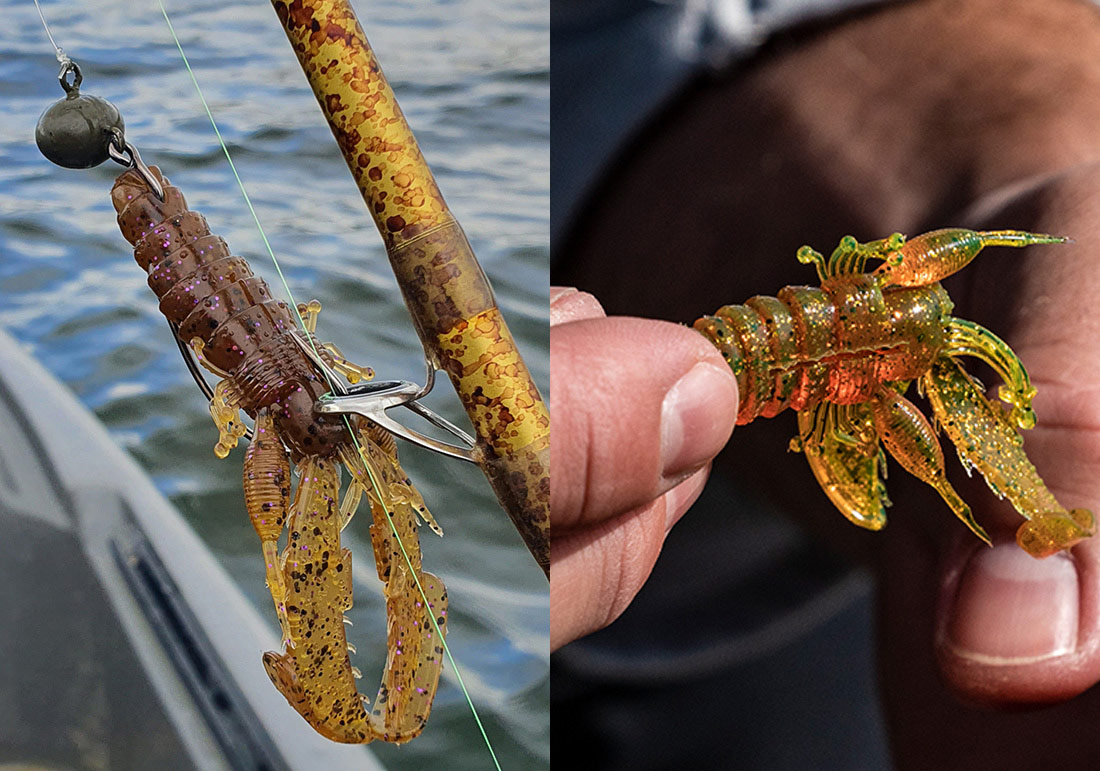 Drop-Shot & Co: Modern US-techniques become more and more popular in Europe.
Drop-Shot & Co: Modern US-techniques become more and more popular in Europe.
Currently, the NED Fishing is really hot and strong in coming! And also, the associated new lures made of TPR (Thermo Plastic Rubber, very elastic, very durable and long-lasting, while environmentally friendly). But not all "US or Japanese techniques" can be transferred 1:1 to our European fishery, because the bass (black bass) common overseas is much more aggressive and less stimulus-braked than our domestic, European namesake.
adh-fishing: You have offered guiding for many years. Do you still do that or do you lack the time or even the desire to do so in the meantime?
Dietmar Isaiasch: Since I am on the road a lot for my YouTube channel and also have to take care of Westin in Germany and Austria, I unfortunately lack a little time. However, I still have a lot of fun guiding and if I find the time, I still offer individual tours, but not as often as before. Just have a look at my website www.lureangler.com, maybe we will make it to the water together one day!
adh-fishing: There is now an incredible selection of supposed top brands for every branch of spin fishing. What distinguishes Westin from the vast majority of manufacturers on the market?
Dietmar Isaiasch: In the specialist area of "predator fishing", Westin is a brand that covers all areas and fish species in both freshwater and saltwater. We produce and develop everything except reels! A big difference to very many other brands: at Westin really all employees in charge of product development up to purchasing, marketing, sales and service, are fishermen themselves, Of course, our boss is also a passionate predator fisherman.
It all started 70 years ago with Hardbaits in Sweden. Today, the brand is represented worldwide and is incredibly strong, especially in the USA and Europe. One huge advantage we have at Westin is that we can draw on the cumulative expert knowledge of a totally versatile pro team and integrate specialists like Jürgen Larsson (inventor of pelagic fishing), Luc Coppens and many other pro anglers into our product development. This is incredibly valuable and sets Westin apart from many other brands.
adh-fishing: A few years ago you were already at Westin. What made you come back and what has changed for you?
Dietmar Isaiasch: At Westin, I appreciate the very human and respectful way of dealing with its employees. In Scandinavia, this working relationship is simply very cordial and at Westin I notice this particularly. The door was always open for me there and I have the feeling at Westin that my work and creativity are simply very much appreciated. That motivates me, of course!
adh-fishing: Today you are firmly involved in product development at Westin. What does such a development process look like? How long do the test phases take, approximately (rods vs. lures)?
Dietmar Isaiasch: Many underestimate the work and time behind every product. With lures, it takes about 9 - 12 months from the idea over the first hand samples, the first prototype and further test products, to the finished product as it lands in the fishing store. Through COVID, the times have of course been extended again and currently such a lure development takes more like 12-18 months.
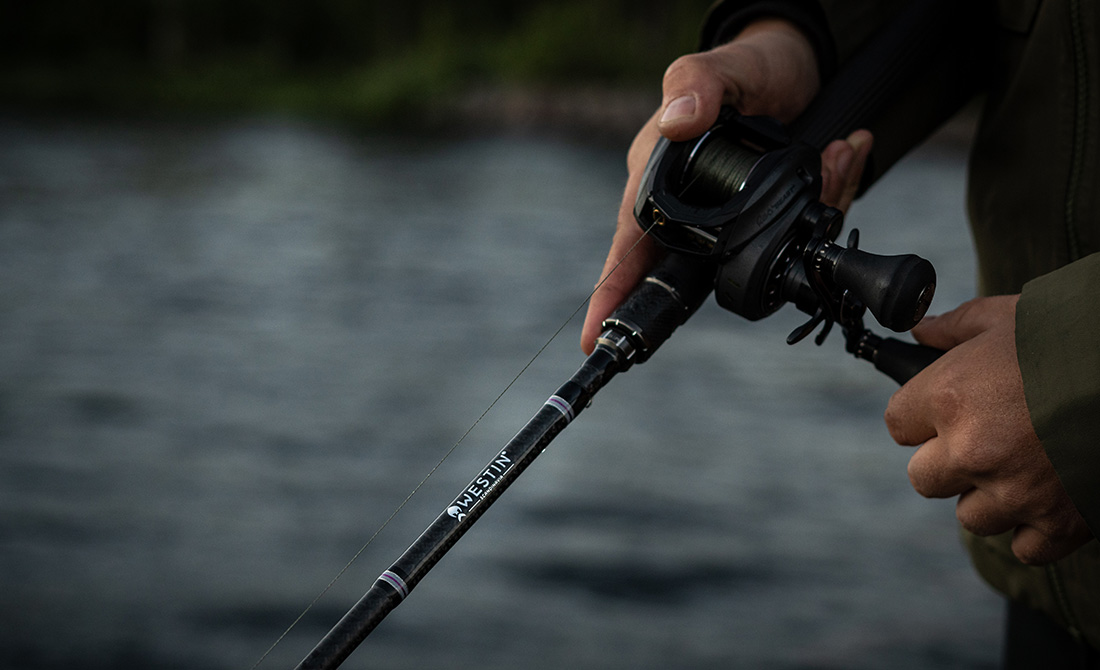 Each Westin rod will go through intensive testing before finally hitting the fishing shops.
Each Westin rod will go through intensive testing before finally hitting the fishing shops.
For rods, it took about a little less than a year. Usually, the hand samples for rods come a little faster, especially if I can be on site at the factory myself to test the samples. This was always important to me because I bake the blanks for my rods completely myself, so I can decide exactly which carbon mat to use when and where to get a particular action. Nowadays (with Corona) it takes about 12-15 months from conceptual design to final production due to unscheduled delays, especially in raw material procurement.
adh-fishing: What influences your rod and lure development at Westin? Where do you get suggestions and feedback from?
Dietmar Isaiasch: When it comes to developing new product, at Westin everything runs according to the motto: he who fishes a lot also knows a lot...and since all of us are anglers ourselves, there is a never-ending pool of ideas and a lot of feedback.
You can roughly say that out of 20 ideas +/- three are realized. Westin is fortunate to draw from a very large pool of knowledge and ideas from extremely specialized anglers. So, the potential for excellent, innovative ideas is enormous. Some concepts may not be well received at first, but in some cases are a few years ahead of their time and end up on the table again later. A good example is the spin jig.
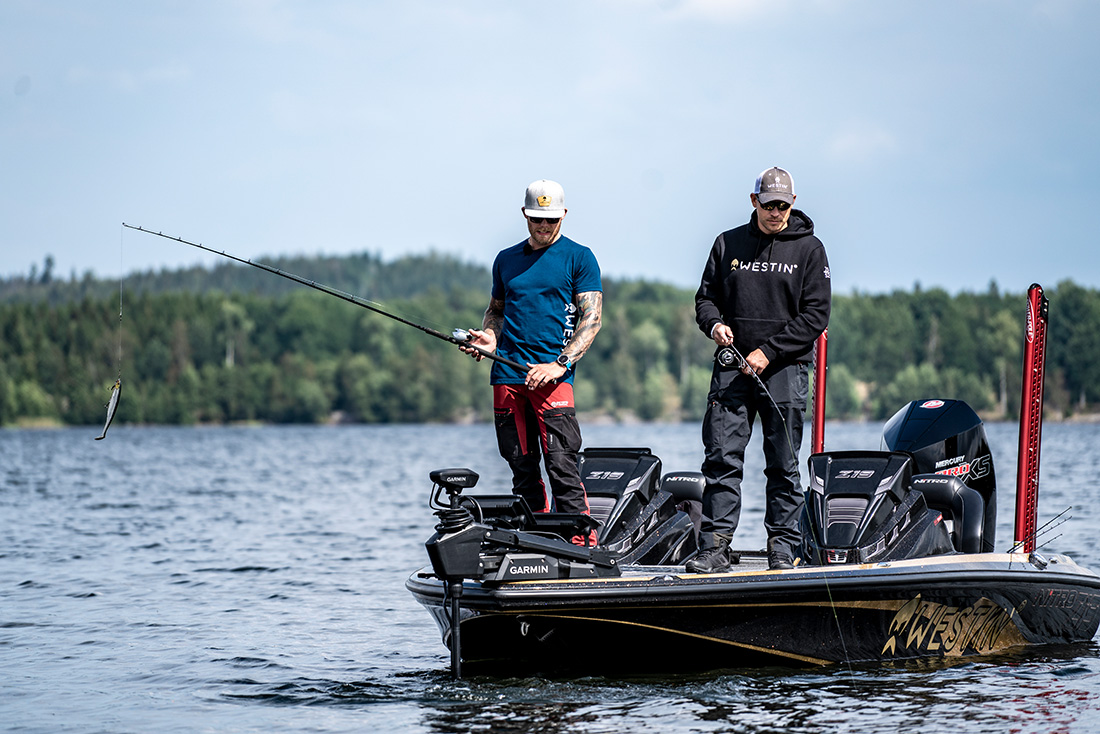 "He who fishes a lot also knows a lot": The concentrated expert-knowledge is a fantastic breeding ground for new ideas at Westin.
"He who fishes a lot also knows a lot": The concentrated expert-knowledge is a fantastic breeding ground for new ideas at Westin.
adh-fishing: At Westin, the rods are described as W3, W4, W6, etc., what distinguishes the individual series from each other?
Dietmar Isaiasch: We have copied this categorization from the automotive industry. The higher the number, the more features, horsepower, carbon content, exclusive components, etc. This does not mean that a W4 is worse than a W10. It just depends on what the angler is looking for, how much he/she wants to spend and how the rod will be used. Fishing rods are sometimes very roughly "thrown around", this does not hurt as much with a 150€ rod as with a 800€ rod. But this is also a great way for us to test the receptivity in the market. A great example of this is the Powerteez: we feared that it might be too stiff and too fast for most anglers, so we first produced it in the W3 range. But the rod was so well received that we then expanded it to the higher-end series and wanted to offer the same action in an even higher-quality setup.
adh-fishing: Do you have a favorite rod from the Westin range?
Dietmar Isaiasch: My PowerTeez! I developed this rod for Westin many years ago and it is still my very first choice for jigging for zander, pike and perch!
adh-fishing: Fishing has not only been your passion for several decades, but your main profession. Do you sometimes find it difficult to switch off? Maybe go back to coarse fishing in your spare time?
Dietmar Isaiasch: If I have to switch off from something, it would mean for me that it is no fun. I don't feel that way at all about fishing, because passion and profession merge smoothly. When I need to redirect my focus or recharge my batteries for new ideas, I draw/paint or walk the dog. That's the perfect balance for me!
adh-fishing: Summer slump? Does that exist for you in spin fishing? What do the hot months of the year have in store for you? What are your summer highlights fishing-wise?
Dietmar Isaiasch: There is no bad season for predator fishing! Due to the climate change, the seasons are becoming less and less distinct and it is becoming more and more difficult to divide the year into separate climatic periods. For me there is absolutely no summer hole in spin fishing, because you can always fish for predatory fish as long as the closed seasons allow it. Zander, pike and perch are not as sensitive to higher temperatures (as salmonids are, for example) and especially the summer months hold many varied fisheries for us spin fishermen. Much more important for me is the question of spot selection in the summer. Where is the baitfish, where is structure, where is more oxygen/current, where are the weed edges. Also, the type of fishing can be very exciting in the summer, for example you can experience spectacular moments with top water lures. So, for me, summer is an absolutely exciting season when hunting for predatory fish with a spinning rod!
Didi's top-10 tips for the summer!
- Find green weed (no dead, brown plants), there will definitely be baitfish and predators nearby.
- Fish shallow over the weed filds.
- When fishing near plants, also fish flashy lure colors every now and then. Even if the water is clear.
- Fish fast: speed up your lure!
- Try to make extra noise every now and then, e.g. with rotating leaves or rattles in the lure.
- Try surface lures especially in the early morning!
- Seek out high current sections: Inlets, windcanals, anywhere that gets a lot of oxygen into the water.
- On large bodies of water, simply troll or crank through the open water.
- Try out extreme things: very small lures or very large baits. Break the "pattern"!
- If the sky is a bit overcast also fish out the midday hours, not only always early and very late. It’s not uncommon to catch really good fish during midday in summer.
adh-fishing: Didi, thank you so much for the interesting interview, the helpful tips and the insights you could give us behind the scenes at Westin. We wish you tight lines for the current season and look forward to many more exciting innovations from you, which will surely come.
